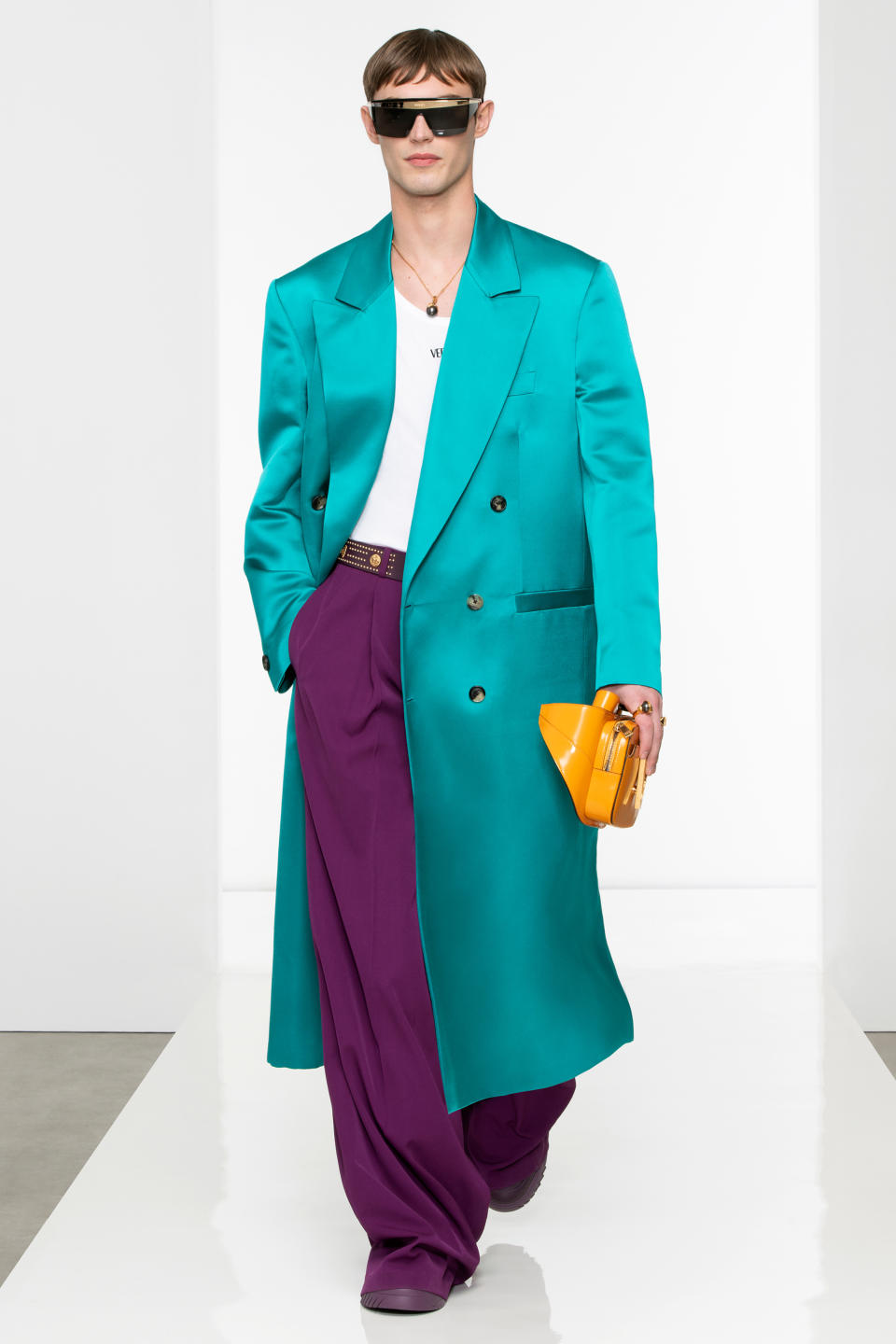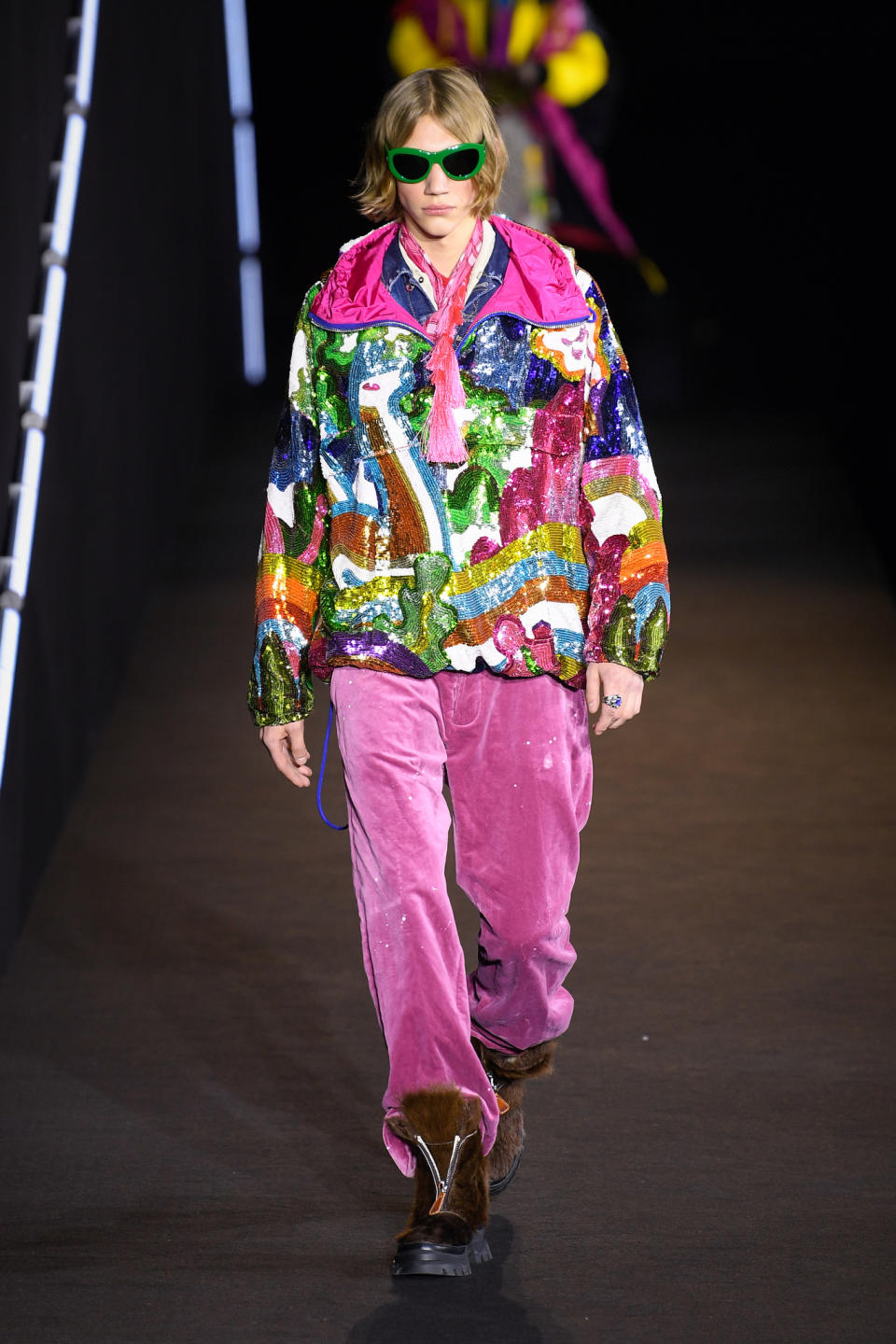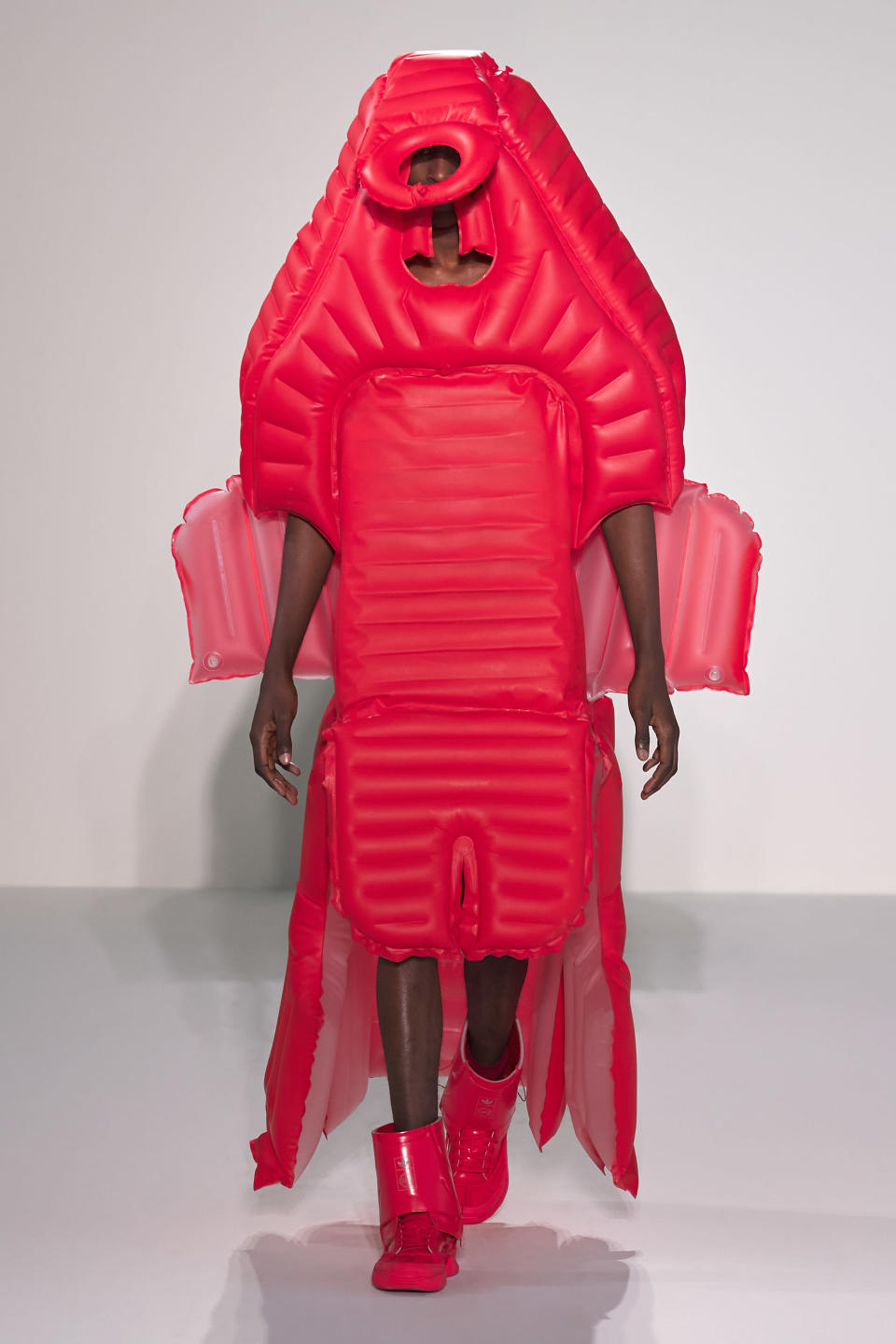Dedicated Menswear Shows Are Making a Comeback

The coed fashion show, which gained popularity in recent years, is yielding to a great uncoupling in order to give menswear a bigger spotlight.
Versace and Dsquared2 are among European brands that recently reverted to dedicated menswear displays in order to spur their businesses. And now comes word that Givenchy will separate menswear and womenswear to give each category more visibility.
More from WWD
Givenchy’s spring 2023 men’s show, slated for Paris Fashion Week in June, will mark the first time showing menswear alone since Matthew Williams joined the house as creative director in June 2020.
Many argue that coed shows — a format popularized during the pandemic to present a unified brand statement — may be doing menswear a disservice, especially as a new generation of fashion-driven men drive growth in the category.
“It notably simplified the show logistics and generated savings,” said Ralph Toledano, president of the Fédération de la Haute Couture et de la Mode. “Some brands who experienced coed shows are coming back to two shows, but coed will continue to be relevant for smaller houses and no-gender brands.”
In Toledano’s view, there are arguments to be made for coed displays. “If a women’s brand wants to introduce menswear, it is a real opportunity to mix it with womenswear at the early stages of the line,” he said in an interview. “Coed shows also allow houses to illustrate the design consistency of a brand.”
According to Carlo Capasa, president of the Camera Nazionale della Moda Italiana, the coed format is still largely beneficial to emerging brands, helping them contain costs. And when timed with the men’s season, as was the case for 44 Label Group last January, coed formats allow emerging brands to conduct early sales campaigns and generate the bulk of revenues from show pieces, both for men’s and womenswear, which may be the only collection they produce.
But there are risks.
“In general, as womenswear is more impactful than menswear, the audience may be distracted from menswear,” Toledano said. “And if you show womenswear at the men’s fashion week, it is sure that it will get less attention than if you show it in the women’s fashion week.”
Regardless, menswear is becoming more and more visible, according to Toledano. “Probably because the market has been growing significantly for a while, and also because the quality of the collections has dramatically increased, both in wearability and innovation,” he explained.

Courtesy of Versace
“Men’s is quite an essential part of the business and showing it separately is putting it back under the spotlight, avoiding the risk womenswear swallows its identity,” echoed Capasa. He underscored how a new generation of male customers is more fashion-driven than in the past, further boosting the segment’s visibility.
“The men’s season is more compact than women’s, as is business, but it is inching up and we expect a strong week in June,” he added.
Menswear generated revenues of $413 billion in 2021 and is poised to grow at a compound annual growth rate of 5 percent until 2024, to half a trillion dollars, according to Euromonitor International.
But for now, data suggests coed shows get more attention on digital channels.
“When looking at brands that showed men’s versus women’s separately, we see coverage for women’s can be up to four times higher in media impact value than their male counterparts,” according to Launchmetrics. “Even though the two are sharing a piece of the same pie, sometimes coverage for men’s during women’s can mean brands are getting up to 50 percent of the show’s share of voice, which during women’s fashion weeks is usually the same or more media impact value than if they had showed separately during men’s fashion week.”
Launchmetrics’ proprietary media impact value figure tallies the impact of relevant media placements on all channels (online, social and print), inclusive of paid, owned and earned mediums.
Tabulations for the spring 2019 season, before the pandemic led to a splintering of fashion weeks, show that eight out of 10 of the men’s collections with the highest MIV were featured in coed shows, and the only ones that broke the top 10 with a dedicated men’s show were Dior by Kim Jones and Louis Vuitton by Virgil Abloh — both debut collections.
Still, some in the industry are returning to more dedicated menswear shows.
Among the early adopters of the coed format in 2016, Dsquared2’s Dean and Dan Caten switched back to stand-alone displays at the beginning of the year.
“We wanted to give the same spotlight for both of our collections; they carry the same importance in our brand story and deserve to be treated equally. We envision our collections to be shown on the runway, so they can be experienced with styling, a set and music,” explained Dean Caten.
Although the outputs often come from the same inspiration and men’s and women’s displays are related, Dan Caten said that “they are separate, they make a statement on their own. That’s why it’s important to us to go to the runway in separate shows.”

Giovanni Giannoni /WWD
Andrew Groves, a professor of fashion design at the University of Westminster in London, argued that a rise in coed shows has “only harmed menswear,” which he said had been “pushing boundaries” and generating both revenues and consumer excitement.”
“Both in its development over the last 300 years, and in its processes of production and manufacturing, menswear is a significantly different discipline to womenswear,” he said in an interview. “Coed shows are frequently reviewed by womenswear critics, who frequently lack an interest in or understanding of menswear,” and tend to focus on the womenswear.
According to Groves, “There is an inescapable need for separate menswear and womenswear fashion weeks and shows, as production schedules and target audiences are clearly different.” He noted for designers who specialize in menswear, such as Craig Green, “the trend toward coed fashion weeks, such as the one in London, means that their work is in danger of being marginalized because it is positioned predominantly within a womenswear context.”
“Despite all the talk about gender boundaries blurring, this is only true for a small segment of consumers,” he added.
Alessandro Maria Ferreri, founder and chief executive officer of The Style Gate consultancy, would agree.
In his view, male customers are drawn to different experiences than women and these do not necessarily include the fashion show format. “In spite of the genderless trend, which has done so good to the broader social and cultural discourse, male and female customers are different and expect to be engaged accordingly, even if they end up buying the exact same products,” he noted.
“Fashion brands could always spread their gender-neutral message, but it does not necessarily mean men’s and women’s should go hand in hand, at the same time and with the same format,” he contended.
Michael Fisher, vice president and creative director of menswear at New York-based trend forecasting agency Fashion Snoops, shared a similar opinion. “It’s great that more designers also offer this [genderless] perspective on the runway. But if the collection in question isn’t meant to fulfill that role, men will still want to see a men’s-only show.”
Coed shows are often “too much of a good thing at once,” he said.
“The overarching narrative of the season is so important. Buyers, editors and certainly consumers depend on storytelling to really understand a brand’s intention….I wish the designers would let each story have its moment to allow the inspiration to fully blossom and the message to come through,” Fisher said.
Groves said he wrote the MA Menswear course at Westminster “to make visible the distinction between the design and production of menswear in comparison to womenswear, and to teach the specific technical and research skills of the discipline.” Students of the MA course were meant to showcase their graduate collection at London Fashion Week Men’s, but now participate in a mixed week in June. “Menswear has once again become invisible,” he lamented.

Filippo Fior/Courtesy of Craig Green
To be sure, the coed format has burgeoned to the detriment of nascent men’s showcases including London Fashion Week Men’s and New York Fashion Week: Men’s, which slimmed down to just one day ahead of the women’s market in the span of a few seasons.
Could the uncoupling route embraced by some suggest menswear is the next business driver?
“A lot of brands realized how the choices made pre-pandemic dragged down their men’s businesses, which had lots of potential,” Ferreri noted. He allowed that IRL runway shows may not necessarily be the best choice to win over the male audience and he cited digital displays as a preferable choice.
Fisher countered that the digital fashion week initiatives deployed since the pandemic hit in 2020 have done no favors to menswear, which he described as reliant on storytelling as any part of the industry.
“With so many steadfast archetypes in menswear, it’s crucial to romance the novelty of it all — through music, being able to see the silhouettes, and even appreciate the colorways….The menswear consumer has become incredibly savvy over the last decade. They’re not going to want to go back to being a secondary priority like it was for years and years,” he noted.
Bruce Pask, men’s fashion director of Bergdorf Goodman and Neiman Marcus, argued that “menswear and womenswear operate in different fashion cycles along individual timelines with some regular intersection of trends and movements, as in, say, the recent emphasis on dressing up and occasion-based clothing as well as ski-influenced winter fashion.”
“But far more often, I see independence as far as specific key items and trends bear out in the men’s and women’s markets,” he noted, calling “the successful and rapidly expansive designer menswear business at both Neiman Marcus and Bergdorf Goodman a great indicator of the growth potential of the sector and increasing customer interest in the category.”
In his view, “each global fashion capital’s menswear fashion weeks needs further support from the managing organizations, the press, attendees, as well as designers.”
For example, having Burberry show in London would help in building another London Fashion Week for men, as would men’s shows from Alexander McQueen, Ahluwalia and Bianca Saunders, Pask suggested.
“Editorial attendance seems to depend largely upon the presence of major brands so it seems necessary to enroll their participation as well as sponsorship,” he explained.
Asked if there were any men’s collections he’d like to see as a stand-alone show or presentation, he unfurled a long list: Givenchy, Kenzo, Sacai and Off-White in Paris; Bottega Veneta, Missoni and Versace in Milan, and Jerry Lorenzo for Fear of God, Greg Lauren and The Row in the U.S.
Sign up for WWD's Newsletter. For the latest news, follow us on Twitter, Facebook, and Instagram.

